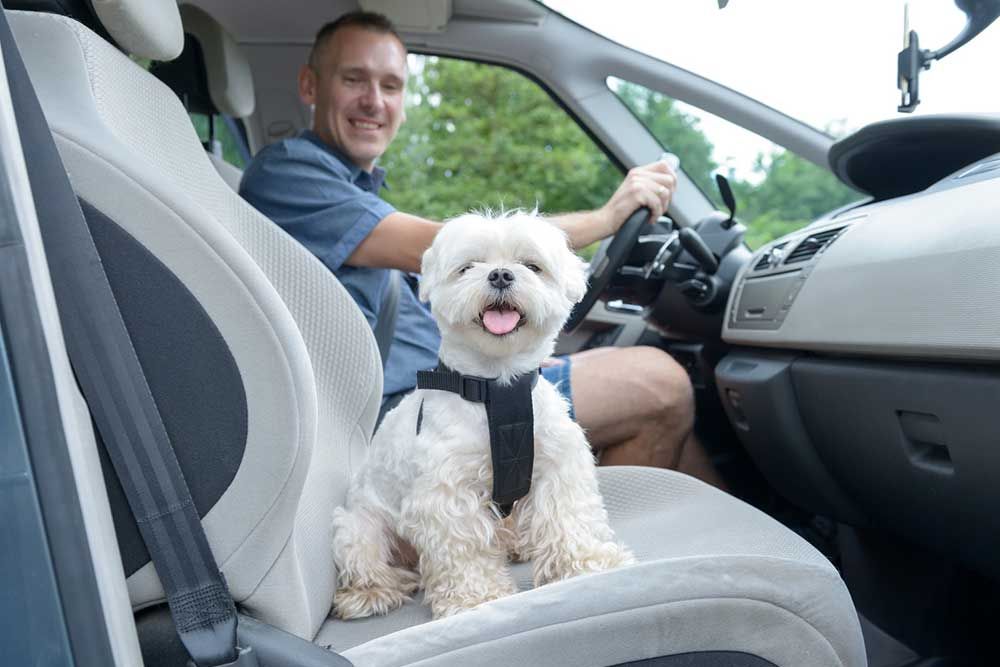Bringing an adopted dog home can be overwhelming, yet the journey of being a dog parent is deeply rewarding. The first few days are consumed by training the dog, understanding its personality, and helping it adjust to its new environment. To ensure a smooth transition, it’s important to learn about a few things before the dog arrives. Thoughtful preparations can significantly ease the adjustment period, making it more comfortable for the dog and the owner.
Training
Pre-planning how and where the dog needs to perform various activities is crucial. House training a newly adopted dog is a time-sensitive matter. Especially if the owners do not want the dog to relieve itself at home erratically. As soon as the small dog is ready to relieve itself after adoption, take them to the designated potty spot. This will make sure it knows the spots and is not peeing or pooping all over the house. Reward the dog with a treat for relieving itself at the right spot. This technique of positive reinforcement can go a long way in house training the dog. Make sure to account for the age of the dog and the possible number of bathroom breaks it might need. Once that is evaluated, keep the number of treats ready for each break, till the dog is properly house trained.
Find a vet
As a pet parent, it’s important to find a vet before bringing the dog home, regardless of how ready the small dog and the rescue shelter are for the adoption. Choosing a vet should not be a decision made on a whim. Start by researching local veterinarians nearby one’s home or workplace. Interview the vet, if necessary and check online reviews posted by other pet parents. Narrow down the options by filtering them based on the attributes one is looking for. New pet parents may also want to take the dog to the vet before taking it home to check for possible vaccinations, deworming routine, and other vital details. Make sure to pick a practitioner that is easy and can be visited every time when needed. It would be easier for the dog to adjust to the same vet instead of visiting different vets.
Food and treats
Small dogs need the right nutritious foods for their growth and development. Pet parents also need to keep treats readily available, especially during the important house training phase with a new furry companion. The financial investment in foods, treats, and other pet requirements can vary significantly, influenced by several factors such as the dog’s size, any specific food requirements, age and activity level.
Larger dogs require a much more substantial quantity of food compared to their smaller counterparts, and puppies often need more frequent meals than older dogs. An active dog will demand a different nutritional approach than one who is more sedentary, which can further impact monthly food costs. Additionally, the type of pet food chosen- from budget to premium food brands- can drastically affect overall expenses. Alternatively, new pet parents can learn to make pet food at home, allowing for customized meal plans to meet specific requirements.
Grooming
Pet grooming depends on the breed size, and the type of dog one adopts. Some dog breeds need regular baths to maintain stink-free coats, while other breeds might need occasional baths in the sink. Similarly, how often a dog needs to be taken for a haircut will also depend on their type and breed. Some dogs shed considerably and do not require frequent visits to the pet groomer. But if the small dog adopted is a poodle, they will need frequent professional sessions to maintain their coat. Dog parents can decide to groom pets by themselves and save on the expensive visits. Or they can visit a DIY grooming place. Before looking at puppies and small dogs for adoption, consider the cost of weekly visits and which dog breed would be feasible to care for.
Routine maintenance
Foresight can be a valuable tool for new pet parents planning to adopt a small dog. Use that foresight and create a daily routine. This will make it easier to stick to the routine once the dog has arrived and prevent the family from struggling to establish one. Careful planning and organization will simplify life for both the dog and the family. Consider scheduling meals, bathroom breaks, walks, playtime, and any other activities. While doing so, take into account the dog’s age, size, and breed. Once the puppy is home, this pre-established routine will facilitate a smoother transition for everyone.
Identification tags
A common mistake new pet parents make is arriving at the shelter or rescue home nearby for adoption without a collar.It is best to arrange customized tags and a collar for the dog. Make sure to include the dog’s name, and the contact number, and address to which the individual can be reached at. And even if the name hasn’t been decided it is best to come with a collar and a tag that carries the owner’s details in marker. This makes it easier for pets to be returned to their homes if and when they are lost.
